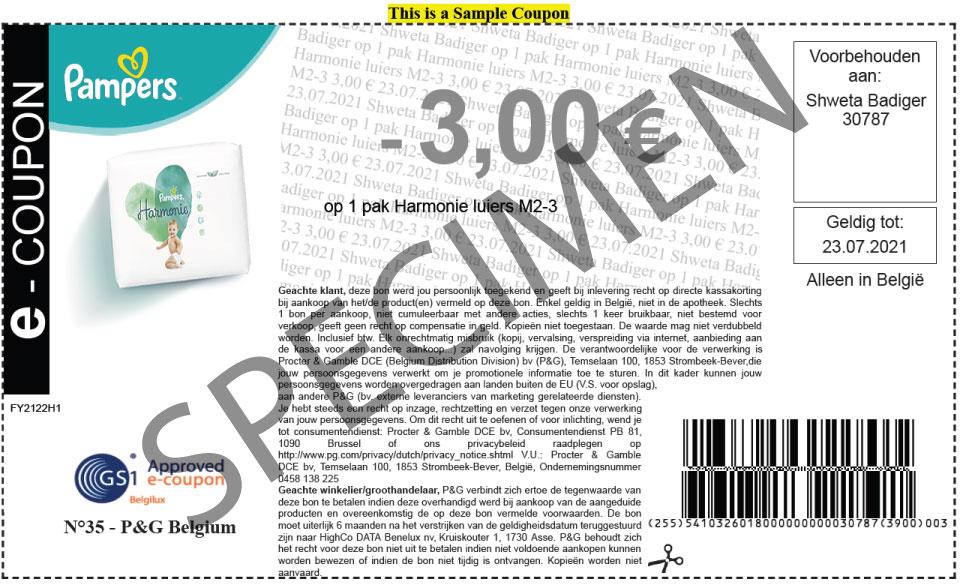
ECoupons are coupons that the consumer can download from a website in PDF format, and then print on paper.
These coupons are always personalized. So besides the Global Coupon Number (GCN) that uniquely identifies the coupon, a serial number – also called a perso code – is added. This makes each individual piece of the same coupon unique worldwide.
Before being able to download the eCoupon, the consumer will have to register certain personal data. This establishes the link between the personalised coupon and the consumer. As a result, the coupon issuer knows – in contrast to a classic coupon – which consumers use their coupons.
How do you issue an eCoupon?
As a coupon issuer, you cannot issue eCoupons yourself. To do so, you have to approach an eCoupon platform certified by GS1. Just like with a classic paper coupon where you assign a third party to design, print or distribute the coupon you have created, with an eCoupon, you do this with a specialised party.
Are you a coupon issuer looking for an eCoupon platform?
You can find the list of certified eCoupon platforms in our solutions provider finder.
Are you as a solutions provider interested in becoming a recognised eCoupon platform?
Contact us using the contact details at the bottom of this page.
What is the difference between an eCoupon and a paper coupon?
Although the eCoupon is issued electronically, it is then printed on paper by the consumer. In other words, just like with the classic coupon issued on paper, the carrier is still paper.
Paper coupons have some disadvantages:
- Consumers can use their smartphone to store their loyalty cards and in-store coupons, scan barcodes of product packaging to request product information or pertaining to self-scan, to pay, etc., but national coupons still have to be handed in on paper in the store.
- Consumers cannot use the paper coupon in online stores.
- Only a fraction of coupons are used. Many printed paper coupons therefore end up directly with the waste paper, unused.
- Accepted coupons are physically transported from the stores to the clearinghouse. This is a slow process, which also slows down the refund from the coupon issuer to the store.
- Paper coupons can be counterfeited.
- Damaged coupons are not readable, or difficult to read by the cash register.
- ...
Both coupon issuers, GS1, the clearing house and certain retail chains therefore dream of being able to replace the paper carrier with a digital carrier. A mobile coupon can therefore be presented on a smartphone. This changeover is currently being prepared step by step.
